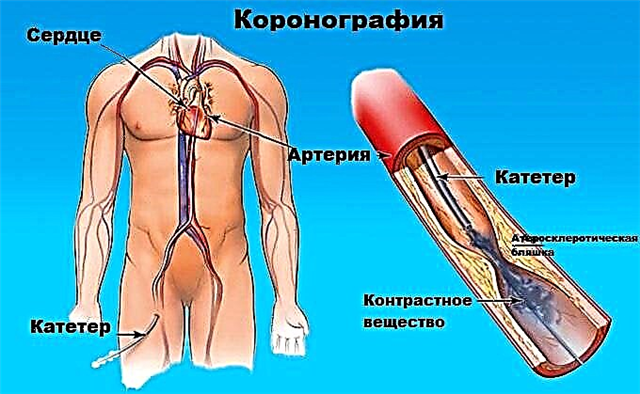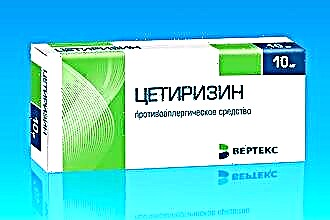Itching of the mucous membrane of the pharynx and larynx is a painful sensation that is often combined with an unproductive, obsessive cough. Usually, the general condition of the patient is satisfactory: there is no sweating, headache, and there are no signs of fever. However, the debilitating itching persists for many hours and may intensify at night. In some cases, itching becomes a manifestation of an allergic rhinitis, hay fever; sometimes it accompanies the infectious process. You need to know what to do - if your throat itches, it is important to imagine what kind of treatment the patient needs, how long it can be.
Treatment principles
 A healthy mucous membrane of the oral cavity, pharynx and larynx does not itch, therefore, the occurrence of complaints of itching and irritation should prompt the idea of a probable pathological process. Tingling and sore throat inside can be explained by:
A healthy mucous membrane of the oral cavity, pharynx and larynx does not itch, therefore, the occurrence of complaints of itching and irritation should prompt the idea of a probable pathological process. Tingling and sore throat inside can be explained by:
- Allergic rhinitis, pharyngitis, laryngitis.
- Pollinosis.
- Oropharyngeal candidiasis.
With allergic rhinitis, pharyngitis and laryngitis, we are talking about inflammation in the area of the nasal cavity, pharynx and larynx of an allergic nature. Pollinosis is an allergic disease caused by plant pollen and manifested by changes in the upper respiratory tract, eyes. Oropharyngeal candidiasis (oropharyngeal candidiasis, candidomycosis) is an infectious and inflammatory process provoked by pathogenic fungi of the genus Candida. It is necessary to distinguish the causes of itching inside the throat, since the treatment will also be different in accordance with them.
The main principles of therapy are:
- cessation of contact with an allergen in case of an allergic nature of the disease;
- destruction of an infectious agent - a fungus of the genus Candida;
- symptomatic treatment to relieve the condition;
- immunocorrection, sanitation of foci of chronic infection;
- a combination of non-drug methods and pharmacological drugs.
With oropharyngeal candidiasis, it is important to find out the cause of the development of the fungal infection. This may be the fact of long-term antibiotic therapy or the presence of an immunodeficiency in the patient. Sometimes candidiasis of the oropharynx and larynx is a consequence of speech load in representatives of the "voice" professions - teachers, singers, and the throat of patients continues to itch for a long time. Symptoms alone cannot be treated without an understanding of the cause; a comprehensive approach is required for a successful recovery.
Non-drug therapy
Pharmacological agents are not the only components of therapeutic regimens available to the patient. The need for them depends on the clinical situation, and in some cases, non-drug methods are even more effective than pills or injections. An example is allergic pathologies, in which the elimination of allergens brings a noticeable relief of the condition.
Patients require:
- Elimination and hypoallergenic diet for allergic diseases.
 Foods that can be safely called allergens are completely excluded from the diet, and food components with a significant degree of allergenicity are limited. Correction of the diet is carried out in conjunction with the doctor in order to preserve all the necessary nutrients.
Foods that can be safely called allergens are completely excluded from the diet, and food components with a significant degree of allergenicity are limited. Correction of the diet is carried out in conjunction with the doctor in order to preserve all the necessary nutrients.
- Elimination (elimination) of household and other allergens.
This is regular wet cleaning of dust, rejection of feather pillows, allergy-provoking cosmetics - in general, modification of the patient's lifestyle according to the type of disease and sensitivity to allergens.
- Diet for oropharyngeal candidomycosis.
The patient is advised to consume easily digestible, nutrient-rich foods, which should contain components that inhibit the growth of fungi. Shown, in particular, fermented milk products. Better to steam, simmer, boil; chop food or choose soft, liquid, and semi-liquid foods to avoid pain when chewing and swallowing.
With candidiasis of the oropharynx, you should not eat food containing a large amount of sugar.
It is also worth giving up fried, salty, pickled dishes, chips, coffee, alcohol, packaged juices. During the treatment of oropharyngeal mycosis, food restrictions help to achieve the result faster.
Although the patient finds plaque in the mouth, on the surface of the mucous membrane, it is better not to clean it off. First of all, it is useless: in the absence of exposure to the infectious agent, the layers will reappear. Plaque will disappear only if mycosis is properly treated. Also, with excessive application of forces, there is a risk of damage to the mucous membrane and creating conditions for the attachment of a secondary infection. This will complicate the course and require additional drug load.
Antiallergic drugs
Antiallergic drugs are drugs used in the treatment of allergic diseases to stop allergic reactions and eliminate clinical manifestations. These include:
- antagonists of H1-histamine receptors, or antihistamines;
- mast cell stabilizers, or membrane stabilizers;
- glucocorticosteroids;
- antileukotriene drugs.
These agents have a variety of effects: antipruritic, decongestant, as well as antispastic and, in some cases, mild local anesthetic. The most powerful are synthetic preparations of glucocorticosteroids - adrenal cortex hormones. However, they are not intended for routine use in mild cases, and even more so for self-medication, since improper use threatens with many hard-to-eliminate side effects.
One of the signs of allergic rhinitis and pharyngitis is an itchy throat near the palate - treatment should include remedies that quickly resolve symptoms. The drugs of choice are antihistamines - for example, Cetirizine, Desloratadine, Erius.
 How are medications used for itchy throat? Antihistamines are prescribed in a course (from 10 days to several months). With moderate and severe course, a combination with topical forms of glucocorticosteroids (Mometasone, Betamethasone, Nasonex), which are administered topically (for example, into the nasal cavity), is needed. It is better to choose prolonged versions, which are applied 1-2 times a day and last from 12 to 24 hours. Also, the therapy regimen can be supplemented with an antileukotriene drug (Montelukast), which is usually used in the selected dosage once a day from 3 to 6 months inclusive.
How are medications used for itchy throat? Antihistamines are prescribed in a course (from 10 days to several months). With moderate and severe course, a combination with topical forms of glucocorticosteroids (Mometasone, Betamethasone, Nasonex), which are administered topically (for example, into the nasal cavity), is needed. It is better to choose prolonged versions, which are applied 1-2 times a day and last from 12 to 24 hours. Also, the therapy regimen can be supplemented with an antileukotriene drug (Montelukast), which is usually used in the selected dosage once a day from 3 to 6 months inclusive.
Membrane stabilizers (Cromoglycic acid, Tayled, Cromohexal) act more slowly than antagonists of H1-histamine receptors; are suitable for long-term therapy, as well as prophylactic agents. They are offered not only for systemic (tablet forms), but also for topical (nasal spray, eye drops, aerosol inhaler) use.
Antifungal drugs
With oropharyngeal candidiasis, the following are used:
- antiseptics (Lugol's solution, Chlorhexidine, Hexetidine);
- antimycotics (Clotrimazole, Levorin).
The drugs can be applied topically (rinses, ointments, sprays, lozenges) and systemically (tablets, injections). With a mild course, preference is given to local treatment of the mucous membrane. If the process is widespread, systemic administration of drugs is also used.
Gargle with antiseptics at least 3 times a day after meals.
If there is a need for long-term use of local antiseptics, you need to remember about the development of resistance (resistance) to them of infectious agents and replace the drug weekly.
Additional activities
For diseases that are characterized by itching in the throat, complementary measures to the main therapy are:
- Symptomatic drugs for allergies.

- Allergen-specific immunotherapy for allergies.
- Gargling with oropharyngeal candidiasis.
Symptomatic drugs that can be used to relieve allergic rhinitis and pharyngitis include topical nasal decongestants, or vasoconstrictor nasal drops (Xylometazoline, Oxymetazoline, Naphazoline). They are indicated both for the relief of rhinitis symptoms and for the purpose of restoring patency of the nasal passages before the administration of topical drugs (for example, glucocorticosteroids).
Allergen-specific immunotherapy (ASIT) is included in the treatment standards for allergic rhinitis and other allergic diseases of the upper respiratory tract. It is especially useful if the patient cannot avoid contact with the allergen (for example, when house dust or pollen is causing the reaction). The method reduces the need for drug therapy - in particular, antihistamines. If ASIT is effective, symptoms of allergic inflammation are suppressed.
The patient using nasal decongestants should be aware of the phenomenon of tachyphylaxis and the risk of developing rhinitis medicamentosa.
The phenomenon of tachyphylaxis consists in a decrease in the effect of the drug while maintaining the usual dosage. The patient can increase the dose, which threatens the realization of side effects. Rhinitis medication is the result of prolonged use of vasoconstrictor drops and sprays. Therefore, before starting treatment, a limit is set from 3 to 5, maximum 7 days - longer than this period, drugs from the decongestant group cannot be used.
Gargling can be performed not only with drugs with an antifungal effect. Patients are also advised to use:
- warm soda solution;
- warm water (pre-boiled).
Rinse your mouth and throat after each meal, as well as before applying drugs to the mucous membrane. Patients with a high risk of recurrence of mycosis (immunodeficiency, HIV infection) are advised to perform this hygienic measure even after completing the course of treatment.
Self-medication for itching in the throat is unacceptable, since it can lead to the progression of the disease, an expansion of the spectrum of causally significant allergens, and the development of resistance of fungal agents to drugs. Therapy should be carried out in accordance with the recommendations of the doctor. Itching in the throat is treated by a therapist, pediatrician, otolaryngologist, infectious disease specialist, allergist.




